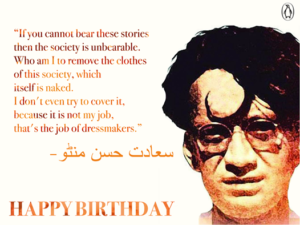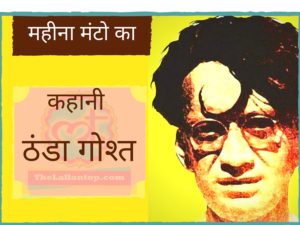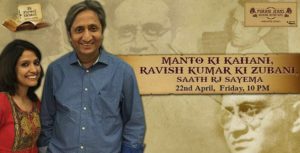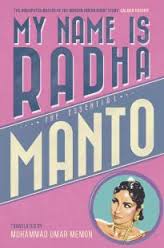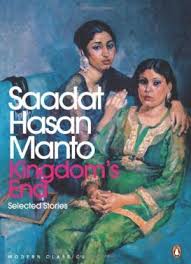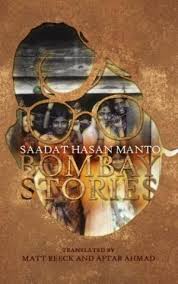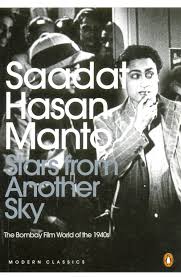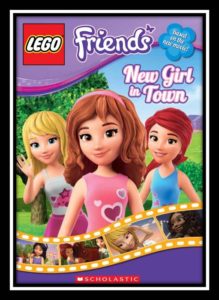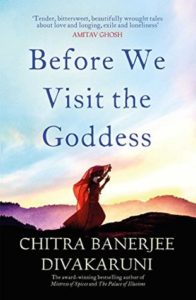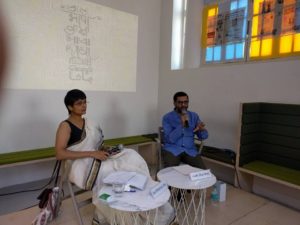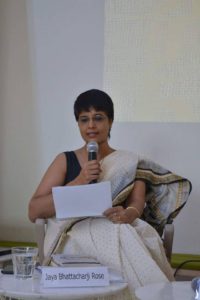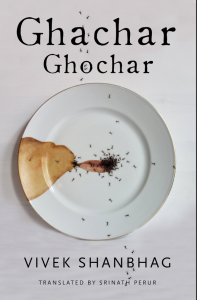Katherine Applegate, “The One and Only Ivan” and “Crenshaw”
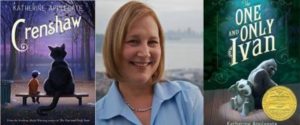 Katherine Applegate’s Newberry award-winning book The One and Only Ivan (2012) is a stunningly beautiful book and a must read for children and adults alike. The New York Times wrote “It was based, loosely, on a true story; it addressed the issue of animal cruelty honestly, but in a manner that children could handle; it was technically original, telling the story from Ivan’s perspective, in short chapters that read like prose poems. But the primary reason “Ivan” has become such a beloved book is Ivan himself. His frank wisdom about life, both human and animal, provokes laughter and thought; his aspirations — to become an artist, and to liberate himself through art — feel universal.” ( 6 Nov 2015 http://nyti.ms/1TH2ehd )
Katherine Applegate’s Newberry award-winning book The One and Only Ivan (2012) is a stunningly beautiful book and a must read for children and adults alike. The New York Times wrote “It was based, loosely, on a true story; it addressed the issue of animal cruelty honestly, but in a manner that children could handle; it was technically original, telling the story from Ivan’s perspective, in short chapters that read like prose poems. But the primary reason “Ivan” has become such a beloved book is Ivan himself. His frank wisdom about life, both human and animal, provokes laughter and thought; his aspirations — to become an artist, and to liberate himself through art — feel universal.” ( 6 Nov 2015 http://nyti.ms/1TH2ehd )
Ivan is a gorilla in captivity. He lives in a mall with a bunch of other retired circus animals including Stella, an elephant and Bob the stray dog who has adopted him. After the humans have left for the night, Ivan and Stella converse with Bob usually napping on Ivan’s large tummy. One day Ivan requests Stella to recount the Jambo story. It is about Jambo a gorilla into whose zoo enclosure falls a human baby. Read on…
****
‘Tell us the Jambo story,” I say. It’s a favourite of mine but I don’t think Bob has ever heard it.
Because she remembers everything, Stella knows many stories. I like colourful tales with black beginnings and stormy middles and cloudless blue-sky endings. But any story will do.
I’m not in a position to be picky.
“Once upon a time,” Stella begins, “there was a human boy. He was visiting a gorilla family at a place called a zoo.”
“What’s a zoo?” Bob asks. He’s a street-smart dog, but there’s much he hasn’t seen.
“A good zoo,” Stella says, “is a large domain. A wild cage. A safe place to be. It has room to roam and humans who don’t hurt.” She pauses, considering her words. “A good zoo is how humans make amends.”
Stella moves a bit, groaning softly. “The boy stood on a wall,” she continues, “watching, pointing, but he lost his balance and fell into the wild cage.”
“Humans are clumsy,” I interrupt. “If only they would knuckle walk, they wouldn’t topple so often.”
Stella nods. “A good point, Ivan. In any case, the boy lay in a motionless heap, while the humans gasped and cried. The silverback, whose name was Jambo, examined the boy, as was his duty, while his troop watched from a safe distance.
“Jambo stroked the child gently. He smelled the boy’s pain, and then he stood watch.
“When the boy woke, his humans cried out, ‘Stay still! Don’t move!’ because they were certain – humans are always certain about things – that Jambo would crush the boy’s life from him.
“The boy moaned. The crowd waited, hushed, expecting the worst.
“Jambo led his troop away.
“Men came down on ropes and whisked the child to waiting arms.”
“Was the boy all right?” Bob asks.
“He wasn’t hurt,” Stella says, “although I wouldn’t be surprised if his parents hugged him many times that night, in between their scoldings.”
Bob, who had been chewing his tail, pauses, tilting his head. “Is that a true story?”
“I always tell the truth,” Stella replies. “Although I sometimes confuse the facts.”
( p.59-61)
***
Unfortunately reality is harsher.
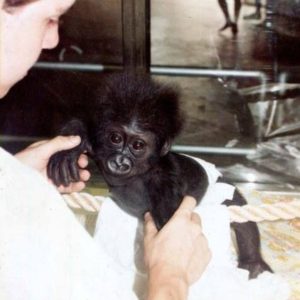 On 28 May 2016, seventeen-year-old Harambe was shot dead in Cincinnati zoo. Here is the account by Charles Alexander (https://www.facebook.com/wildlifeartist?fref=photo&qsefr=1 )
On 28 May 2016, seventeen-year-old Harambe was shot dead in Cincinnati zoo. Here is the account by Charles Alexander (https://www.facebook.com/wildlifeartist?fref=photo&qsefr=1 )
Harambe died today, one day after his 17th birthday. Son of Moja, he was born and raised at the Gladys Porter Zoo here in South Texas– a magnificent western lowland gorilla. Everyone loved him here. Last year, the big guy was sent to Cincinnati Zoo to meet some girls. This afternoon, Harambe was shot dead when a small child crossed a railing, got through a fence, past thick Pyrecantha bushes and a 12″ thick concrete wall– and fell into the gorilla moat. Where were the parents of the child? Looking at their cell phones? I see kids running wild all the time at the Gladys Porter Zoo, at every zoo I visit. Chasing  peacocks, yelling at the animals, feeding animals, throwing stuff into exhibits, often totally unsupervised and undisciplined. Adults do the same crap. Ignorant and self-entitled to do what they please, here in this very special place that many endangered species call home, they couldn’t care less about the consequences of their behavior. Now Harambe is dead. Great work people! Animals lose again.
peacocks, yelling at the animals, feeding animals, throwing stuff into exhibits, often totally unsupervised and undisciplined. Adults do the same crap. Ignorant and self-entitled to do what they please, here in this very special place that many endangered species call home, they couldn’t care less about the consequences of their behavior. Now Harambe is dead. Great work people! Animals lose again.
RIP Harambe.
Katherine Applegate has recently published an equally moving book for children Crenshaw. Both books are published by HarperCollins Children’s Books.
Reality IS stranger than fiction.
Read these two novels. Share them. Live them. Avert such unnecessary tragedies in future.
Katherine Applegate The One and Only Ivan HarperCollins Children’s Books, London, 2012. Pb. Pp.260.
Katherine Applegate Crenshaw HarperCollins Children’s Books, London, 2015. Pb. Pp.254.
30 May 2016




